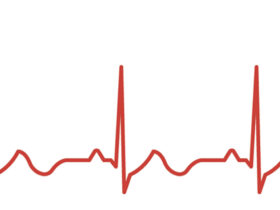By Ravnik Singh, DPM, AACFAS
 As we celebrate National Physical Therapy Month this October, the spotlight turns to an often underappreciated yet crucial aspect of healthcare: physical therapy. National Physical Therapy Month is a time to recognize the vital role physical therapists play in enhancing quality of life, promoting wellness, and supporting recovery. This is especially true for those physical therapists who specialize in foot and ankle care. The foot and ankle are complex structures, and issues in these areas can significantly impact overall mobility and quality of life. Physical therapists who specialize in foot and ankle care play a crucial role in diagnosing, treating, and rehabilitating a variety of conditions that affect these vital parts of the body. This month-long observance aims to raise awareness about the benefits of physical therapy and highlight the dedicated professionals who make a difference every day.
As we celebrate National Physical Therapy Month this October, the spotlight turns to an often underappreciated yet crucial aspect of healthcare: physical therapy. National Physical Therapy Month is a time to recognize the vital role physical therapists play in enhancing quality of life, promoting wellness, and supporting recovery. This is especially true for those physical therapists who specialize in foot and ankle care. The foot and ankle are complex structures, and issues in these areas can significantly impact overall mobility and quality of life. Physical therapists who specialize in foot and ankle care play a crucial role in diagnosing, treating, and rehabilitating a variety of conditions that affect these vital parts of the body. This month-long observance aims to raise awareness about the benefits of physical therapy and highlight the dedicated professionals who make a difference every day.
Understanding Physical Therapy
Physical therapy (PT) is a specialized form of healthcare that focuses on improving movement, managing pain, and restoring function. It involves a range of techniques including exercises, manual therapy, and patient education. Physical therapists work with individuals recovering from injuries, surgeries, or chronic conditions to help them regain their strength and mobility.
The scope of physical therapy is broad, addressing various issues such as:
• Orthopedic Injuries: Sprains, fractures, and joint replacements.
• Neurological Conditions: Stroke, Parkinson’s disease, and spinal cord injuries.
• Cardiopulmonary Conditions: Heart disease and respiratory disorders.
• Pediatric Conditions: Developmental delays and congenital disorders.
• Geriatric Care: Age-related issues such as arthritis and balance disorders.
The Importance of Foot and Ankle Health
Our feet and ankles are foundational to our daily movement. They support our weight, absorb shock, and provide balance and stability. Given their essential role, problems in this area can lead to pain, reduced mobility, and even affect the entire musculoskeletal system.
Some common foot and ankle issues include:
• Plantar Fasciitis: Inflammation of the tissue that runs along the bottom of the foot, causing heel pain.
• Achilles Tendinitis: Inflammation of the Achilles tendon, leading to pain at the back of the heel.
• Ankle Sprains: Injury to the ligaments of the ankle, often caused by twisting or rolling the ankle.
• Flat Feet: A condition where the arches of the feet collapse, leading to pain and alignment issues.
• Bunions: Deformities of the joint at the base of the big toe, causing pain and misalignment.
The Role of Physical Therapy in Foot and Ankle Care
Physical therapists who specialize in foot and ankle care use a variety of techniques to help patients manage and recover from these conditions. Their approach is tailored to a person’s individual needs, focusing on relieving pain, improving function, and preventing future injuries.
1. Diagnosis and Assessment: Physical therapists conduct thorough evaluations to understand the underlying causes of foot and ankle pain. This may include gait analysis, range of motion assessments, and functional tests.
2. Customized Exercise Programs: Based on the assessment, therapists design exercise programs to strengthen the muscles around the foot and ankle, improve flexibility, and correct imbalances. Exercises may include stretching routines, strengthening drills, and balance training.
3. Manual Therapy: Techniques such as joint mobilizations, soft tissue massage, and stretching can help alleviate pain and restore normal function.
4. Orthotic Management: Physical therapists often recommend or design custom orthotics (shoe inserts) to provide better support, correct alignment, and reduce pain.
5. Education and Prevention: Educating patients about proper footwear, activity modification, and injury prevention is a key component of therapy. This helps individuals make informed decisions about their health and prevent future issues.
The Impact of Physical Therapy
Physical therapy is more than just a treatment modality; it’s a pathway to a better quality of life. Physical therapy for foot and ankle issues can lead to remarkable improvements in patients’ lives. From athletes recovering from sports injuries to older adults managing chronic pain, the impact of specialized care is significant. Success stories often highlight:
1. Enhancing Mobility and Function: Physical therapists help individuals regain movement and strength after injury or illness, allowing them to return to daily activities and work.
2. Pain Management: PT offers a non-pharmacological approach to managing pain, reducing the need for medications and minimizing side effects.
3. Preventing Future Injuries: Through education and customized exercise programs, physical therapists help prevent future injuries and promote long-term health.
4. Improving Quality of Life: By focusing on the holistic well-being of patients, PT enhances overall quality of life, aiding in everything from better sleep to improved mental health.
Celebrating National Physical Therapy Month
National Physical Therapy Month is an opportunity to celebrate and acknowledge the hard work of physical therapists and assistants. It’s also a chance to educate the public about the benefits of physical therapy and encourage those who might need it to seek help. During this month, many organizations and clinics engage in various activities including:
• Educational Events: Workshops, webinars, and community talks to spread awareness about physical therapy.
• Social Media Campaigns: Sharing success stories, educational content, and tips on maintaining physical health.
• Open Houses and Free Screenings: Offering the public opportunities to learn more about physical therapy and assess their own physical health.
Getting Involved
You don’t have to be a physical therapist to celebrate National Physical Therapy Month. Here are a few ways everyone can participate:
• Seek Professional Advice: If you’re experiencing foot or ankle pain, consider consulting a professional for a referral to a physical therapist for focused evaluation and treatment.
• Spread the Word: Share information about foot and ankle health on social media or in your community.
• Learn and Share: Educate yourself about the benefits of physical therapy and share this information with others who might benefit.
Ravnik Singh, DPM, AACFAS
Ravnik Singh, DPM, AACFAS, is a Podiatrist at Family Foot & Leg Centers in Port Charlotte, FL. He is a Fellow of the American College of Foot & Ankle Surgeons. Call 239-430-3668 or visit www.NaplesPodiatrist.com to make an appointment. Visit FootHealthFacts.org to learn more about foot and ankle conditions.
3161 Harbor Blvd, Suite B
Port Charlotte, FL 33952
(239) 430 – 3668 (FOOT)
www.NaplesPodiatrist.com







